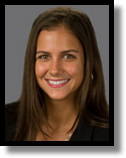 Pediatric Cervical Spine Injuries Anatomical considerations include: - Head-to-body ratio significantly larger than adult patients - High ligamentous laxity, underdeveloped paraspinous muscle development - Increased force on fulcrum between axial spine and skull Rare but dangerous: seen in less than 1% of pediatric blunt trauma 2011 PECARN Annals article lists 8 risk factors: - High mechanism, diving injury, AMS, focal neurologic deficit, neck pain, torticollis, major torso injury, predisposing factors Sepsis Masquerade
- Remember that an elevated lactate does not equal sepsis - Lactic acidosis spawns an extensive differential - The Emergency Department is high risk for medical error o Are you anchoring? o Will your diagnostic inertia negatively affect your patient? o Is premature closure limiting your differential? - Remember to take your diagnostic pause
0 Comments
Spontaneous Bacterial Peritonitis
- defined as infection of ascitic fluid with no obvious surgically removable source - high mortality - 40% at first onset, 70% two year mortality - usually caused by translocation of gut bacteria, GNBs ( E Coli) or GPC (streptococcus sp. etc) - Consider in ALL cirrhotics! - Check for ascites with U/S if you have to. Abdominal Paracentesis: - Paracentesis has very low 5% risk of bleeding which can be avoided by ultrasound - Only 0.6% risk of infection from bowel injury during the procedure or iatrogenic introduction - Fluid Labs: order protein, count, gram stains and culture -The count is what counts. % segs x total nucleated cells = absolute PMN count > = 250 cells per mm3 -gram stain is highly inaccurate with 40 % FP rate -culture is also only positive 40 % of the time -culture negative neutrophilic ascites and SBP should be treated the same Treatment: - Antibiotics : Ceftriaxone 2g per day or Cefotaxime 2g per 6 h - Albumin : 1.5 g/kg in first six hours and 1 g/kg on day 3 Renal Dysfunction: - high correlation with mortality - hepatorenal syndrome - type 1 is acute and more lethal - Reduction in mortality from 29% to 10% with use of albumin SBP Prophylaxis : in GI bleeders, those with previous SBP and also those with low protein ascitic fluid and no history of SBP  1. Keep a low threshold for CT scanning in elderly patients with abdominal pain. 2. Cannot rule out acute mesenteric ischemia with labs alone. 3. Adequate resuscitation and IV antibiotics may prolong reversible ischemia time. 4. Keep AMI high in your differential diagnosis as mortality approaches 100% if missed. 5. CTA is much better than CT with IV and PO contrast (95% sensitivity vs. 83% sensitivity) if highly suspected.  1. All febrile SCD patients get the same initial work-up: H&P, CBC with diff, retic, and BCX 2. ACS = CTX + macrolide (+/- O2 and blood) 3. ACS more likely to develop inpatient... use good pulmonary toilet to prevent 4. Always check the spleen 5. Disposition criteria: home vs. 24H follow-up  1. Be wary of atypical respiratory symptoms 2. Don't be afraid of imaging in the right setting 3. If you are concerned about mediastinal mass, image and admit 4. If you have a patient with mediastinal mass and increased work of breathing but they are relatively stable, leave them alone 5. If forced to intervene, try prone position and call for help  Pseudoaneurysms - Definitions: 1. Outpouching of a blood vessel, involving a defect in the 2 innermost layers (tunica intima and media) with continuity of the outermost layer (adventitia) 2. Alternatively, all three layers are damaged and bleeding is contained by blood clot or surrounding structures - Etiologies are multifactorial, including post traumatic, iatrogenic (post catheterization), infection and inflammation, IV drug use, septic emboli and MI - Clinical Presentation: - Increased swelling which may be pulsatile over site of previous needle puncture, surgery or trauma; Anemia in cases of significant blood loss; significant pain - Look for characteristic yin yang sign on doppler - EAST Guidelines in Trauma: - Level 2 recommendation: Patients without signs of hard vascular injury who have abnormal physical examination findings and or ABI <0.9 should have further evaluation to rule out a vascular injury - Consider vascular imaging in patients with delayed (>1wk) bleeding, pain or swelling after a traumatic injury Hiccups: - An involuntary, spasmodic contraction of the diaphragm and intercostal muscles. Diaphragm contraction results in sudden inspiration and ends with abrupt closure of the glottis, generating the “hic” sound - Thorough history and physical exam is key in patients with persistent hiccups (48h to 1 month) - Etiology is broad. Most common causes include GI (overeating, gastric distention, GERD); post operative; diaphragmatic processes (subdiaphragmatic abscess). - CNS processes are a more serious cause. In patients with neurologic symptoms, consider MRI imaging. Patients with dorsal medullary strokes can have hiccups for up to 1 year that are debilitating and recalcitrant to medications. Sign of Lesar Trelat - Explosive onset of multiple pruritic seborrheic keratoses - Rapid increase in size and number - Often have an inflammatory base - An ominous sign of gastrointestinal carcinomas - Most commonly pancreatic, stomach, liver, and colorectal |
Archives
August 2018
Categories
All
|
 RSS Feed
RSS Feed
